4.2 The Administrative Management Utilities
Through the Administrative Management utilities you can set up and administer the Novell SecureLogin for a user.
IMPORTANT:The option must be selected during the Novell SecureLogin installation.
Figure 4-2 Directory Administration Tools
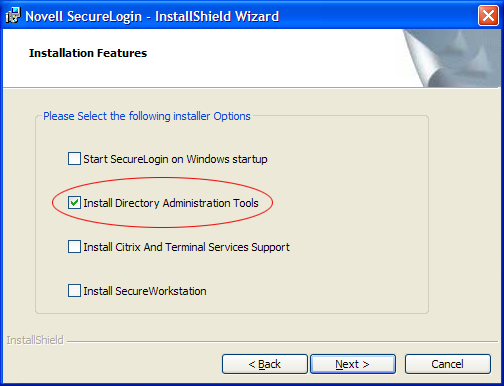
Novell SecureLogin can be administered either through Novell or the SecureLogin Manager.
4.2.1 Accessing iManager
-
In a supported Web browser, type the following in the Address (URL) field:
http://server_IP_address/nps/iManager.html
For example: http://127.0.0.1/nps/iManager.html
You might be redirected to an HTTPS secure page
IMPORTANT:The URL is case sensitive.
-
Log in using your username, password, and eDirectory tree name.
You can substitute the IP address of an eDirectory server for the tree name.
To have full access to all Novell iManager features, you must log in as a user with administrator-equivalent rights to the tree.
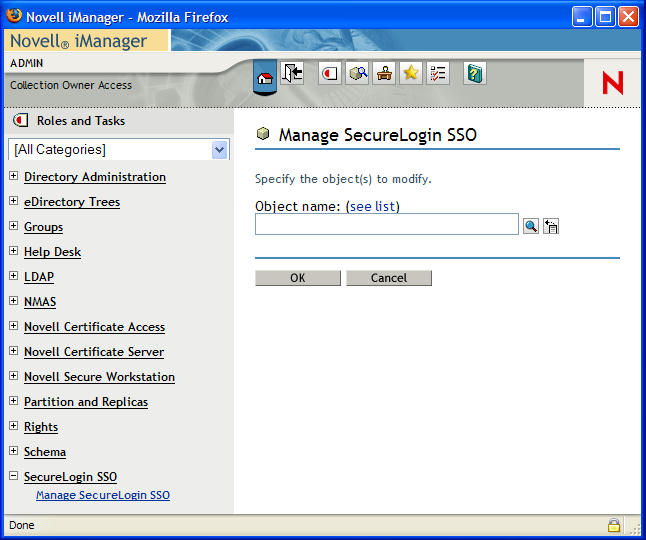
For details on accessing iManager, go to the Novell Documentation Web site for iManager 2.6
For accessing and using SecureLogin Manager refer, Section 4.2.2, Accessing the SecureLogin Manager.
-
Click . The SecureLogin SSO page with the single sign-on options is displayed.
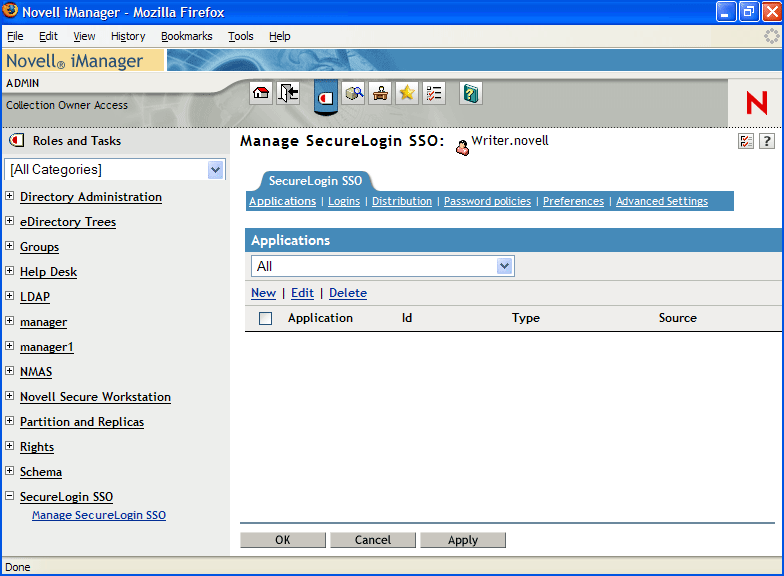
The navigation tree in the top consists of the following options:
NOTE:The same options are available in SecureLogin Manager too.
4.2.2 Accessing the SecureLogin Manager
Novell SecureLogin now incorporates an LDAP-compliant browser.
To launch the SecureLogin Manager:
-
Click > > > .
The SecureLogin Manager is displayed.
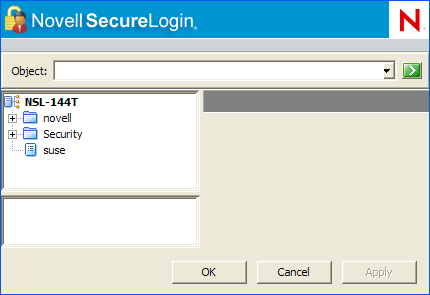
-
From the drop-down list, select the object or specify the full distinguished name (DN) of the user object, container, or the organizational unit for administration.
Alternatively, use the
 icon to navigate to the appropriate object.
icon to navigate to the appropriate object.
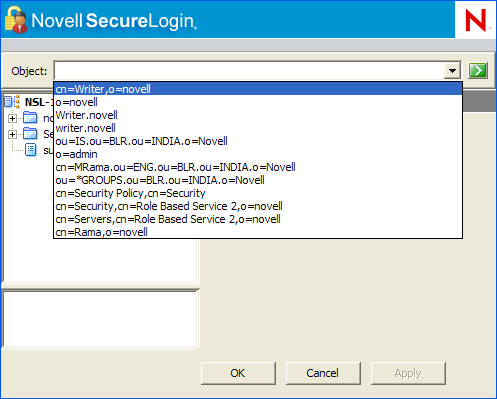
-
Press Enter to submit the entry specified in the object field.
Clicking closes the dialog box and cancels the specified entry.
The navigation tree in the left pane consists of the following options:
NOTE:The same options are available in iManager too.
The SecureLogin manager interface consists of a title bar, menu bar, context bar, panes, and the properties table.
You can access various options in the SecureLogin Manager through the menu bar and shortcut menus.
Selecting a folder in the navigation tree (in the left pane) displays the related information on the right pane. To display the objects associated with the folder in the navigation tree, click the plus (+) sign next to the icon to expand its contents.
NOTE:Not all icons are expandable.
The Menu Bar
The menu bar appears below the title bar in iManager, the SecureLogin Manager, and the Personal Management utility. It is used to select menus and commands to perform actions in the software.
Shortcut Menus
Right-clicking some elements in the Personal Management utility, the SecureLogin Manager, and iManager usually displays a shortcut menu that provides support for the most common tasks. The commands that it display are different for each element. To access shortcut menu commands, click inside the element that you want to work with, then right-click.
Shortcut Menu for the Novell SecureLogin Icon
Figure 4-3 Shortcut Menu for the Novell SecureLogin Icon
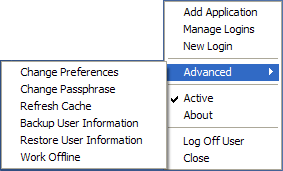
Shortcut Menu for the Applications Pane
Figure 4-4 Shortcut Menu for the Applications Pane

Shortcut Menu for the Logins Pane
Figure 4-5 Shortcut Menu for the Logins Pane

Shortcut Menu for the Password Policies Pane
Figure 4-6 Shortcut Menu for the Password Policies Pane
